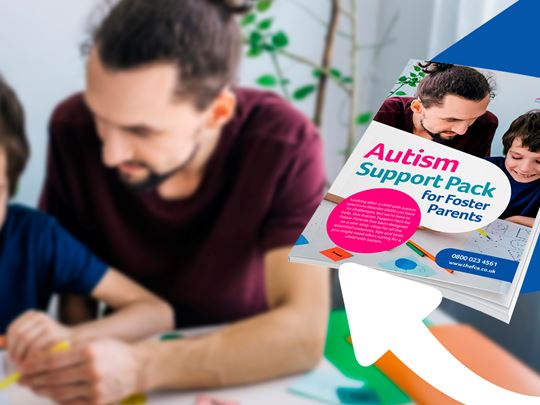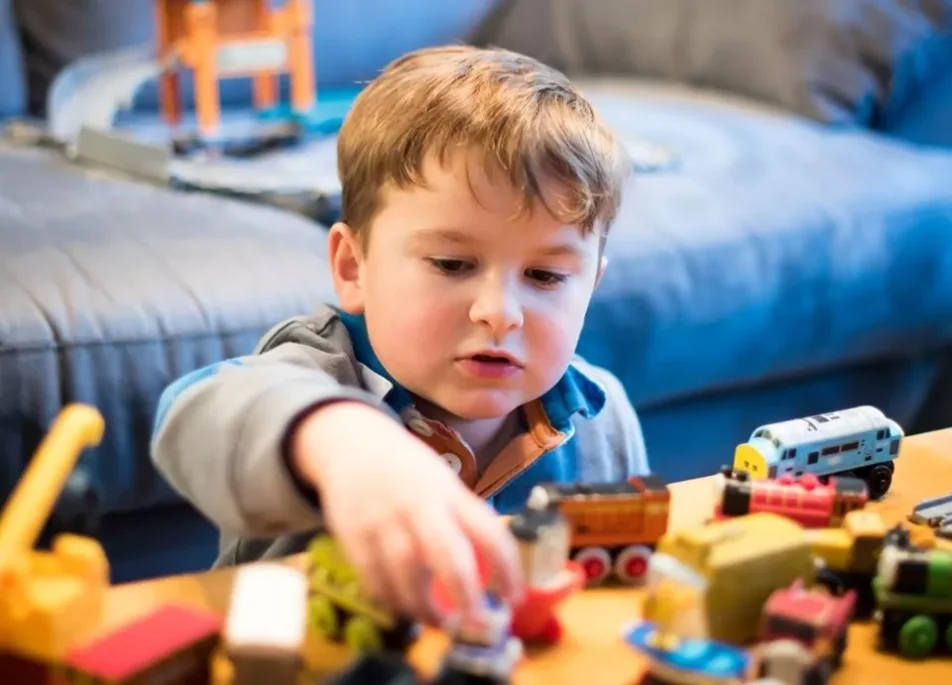What is autism?
Autism is a neurodevelopmental condition that can be characterised by a person’s challenges with social interactions, communication skills and restrictive and repetitive behaviours.
Everybody with autism is unique, which is why the diagnosis is autism spectrum disorder (ASD), as people range from having mild to severe symptoms. Generally, people with autism see and experience the world differently than most, often having heightened sensory stimulation and unique perspectives or ways of thinking. This is what can make fostering an autistic child such an incredible and unique experience.
How to Communicate with a Non-Verbal Child
Fostering a non-verbal child will have its challenges, but there are many different tried and tested ways to communicate and build a loving, healthy bond without using speech.
The benefits of pets for autistic children
Pet’s are not just cute companions, they’re also great for helping autistic children with their social and emotional development. Here’s how pet therapy can positively impact looked after children’s wellbeing.
10 Fun Sensory Activities for a Child with Autism
Discover the benefits of sensory play activities for autism and what you can do with your autistic foster child at home to ensure they’re stimulated, engaged and having fun while learning!
Understanding the difference between girls and boys
The stereotype that autism is more common in boys has been prevalent, but studies show that autism is underdiagnosed in girls. We will explore how autistic girls present differently than boys.
What are the main characteristics of autism?
While no two autistic children are the same, people with ASD share some common characteristics, but the severity and prevalence will differ between each child. The types of symptoms they present with may also depend on their age and whether they’re male or female. Research suggests that girls are more likely to go undetected as they’re more likely to ‘mask’ their symptoms through copying their peers.
For more information about the difference between autistic girls and boys, download our Autism Support Pack for Foster Parents, where you’ll also find autism resources, guidance and advice.
The three main characteristics of autism spectrum disorder are atypical speech, underdeveloped social skills and the presence of restrictive and repetitive behaviours. Here are some specific examples that fall under these three defining characteristics.
- Atypical speech patterns, delayed speech development or no speech, making them non-verbal.
- Repetitive behaviour and speech patterns, such as repeating the same words or phrases or repeating movements like rocking back and forth. This is also called ‘stimming’.
- Hypersensitive to sensory stimulation, such as light, sound or smells.
- Trouble understanding non-verbal communication, such as body language or facial expressions.
- Limited eye contact or response during social interaction.
- Difficulty forming and maintaining relationships.
- Difficulty understanding and empathising with other people’s emotions.
- Difficulty expressing their own emotions in appropriate ways.
- An overwhelming need for routine and structure – if a routine is broken or something unexpected happens, children with ASD may become severely distressed, often leading to a ‘meltdown’, which is when they lose all control over their behaviour.
- Hyperfocus on a particular interest, such as trains, a TV show or a specific brand of toy.
- An intense preoccupation with specific items. This could be anything from a blanket to a rubber duck to a tape recorder or a figurine.
Tips for fostering a child with autism
Set up a sensory space in the home
Hypersensitivity in autism is what we refer to being over or under stimulated by sensory triggers. Children with ASD tend to be hypersensitive to sensory stimulation like sounds, textures, smells and lights, so a sensory space – usually the bedroom – is a good way to help them relax when they’re feeling overwhelmed.
Find out what colours and textures they find soothing to make their room a sensory haven. It’s also important to note that loud or small background noises can be severely distressing, so turn off radios and TVs when not in use.
Keep to a strict, organised routine
People with ASD find their comfort and reassurance in consistency, so routine rules when it comes to fostering autistic children. This means foster parents should make sure the household operates like clockwork. This could be ensuring meals are served at the same times, activities happen at the same table and the school run takes the same route.
Ensure any changes to routine are planned well in advanced
Breaks to routine can be extremely upsetting for autistic children, so anything out of the ordinary should be planned well in advance and communicated as soon as possible. Try to build up exposure to the change gradually, e.g., if you know roadworks are planned that’ll throw the school route off whack, consider going down one different road and then two different roads, all the way up until the whole route needs to change.
Learn about their triggers and remove them from the home
There may be some sensory triggers that upset your autistic foster child, so by learning what they are and their emotional responses, you can look to limit their exposure. It’s not always possible, so in these cases you’ll need to work the child to develop coping strategies, such as a sensory safe space mentioned above, or carrying a distractor toy like a stress ball or rubber band.
Help them express their emotions with the traffic light technique
Autistic children may struggle to understand abstract concepts like emotions, so a clever way to help them is to turn it into something concrete. Give them green, amber and red cards to use to communicate how they’re feeling. This will also help you prepare for when they’re feeling emotional so you can put measures in place to support them.
Allow them to engage with their interests
When fostering a child with autism, you’ll likely be absorbed into the world of their specialist interest or item, which is a special and heartwarming place to be. It’s vital you let them engage and explore their interest (unless dangerous), but make sure to balance it with other activities to help them gain new experiences and develop a rich range of skills.
Make use of support groups
Remember that you’re never alone in your fostering journey, and there will be people to talk to when the going gets tough. When you foster with FCA, you get access to therapy groups where you can learn new skills, share experiences and help each other solve problems.
Help & support for fostering autistic children
When it comes to fostering a child with disabilities, we believe in a therapeutic approach. All foster parents who care for children with ASD receive specialist support and training to equip them with the right knowledge and skills to look after a child with disabilities. Our wrap-around approach to care means access to therapists, support workers and childcare specialists are at the drop of a hat.
We also know fostering a child with autism can be stressful. That’s why we offer short break fostering for children with special needs to give the foster family – or birth family – a much needed rest. All of our foster parents get 14 nights of paid respite too, to ensure you’re given the time to recharge your batteries or spend some one-on-one time with birth children.
When your foster with FCA, it’s like joining a large family where you’re surrounded by experts who are all committed to the wellbeing and development of your foster child. Put simply, you’re never alone.
For a comprehensive list of autism resources, helplines, support networks and further information about autism, download our Autism Support Pack for Foster Parents. Or, you can get in touch where one of our friendly fostering advisors will help answer any questions you have.

Autism Support Pack for Foster Parents
Download the FCA’s Autism Support Pack. Learn more about the common misconceptions made about children with ASD and how to adapt your home and surroundings to children with autism.

